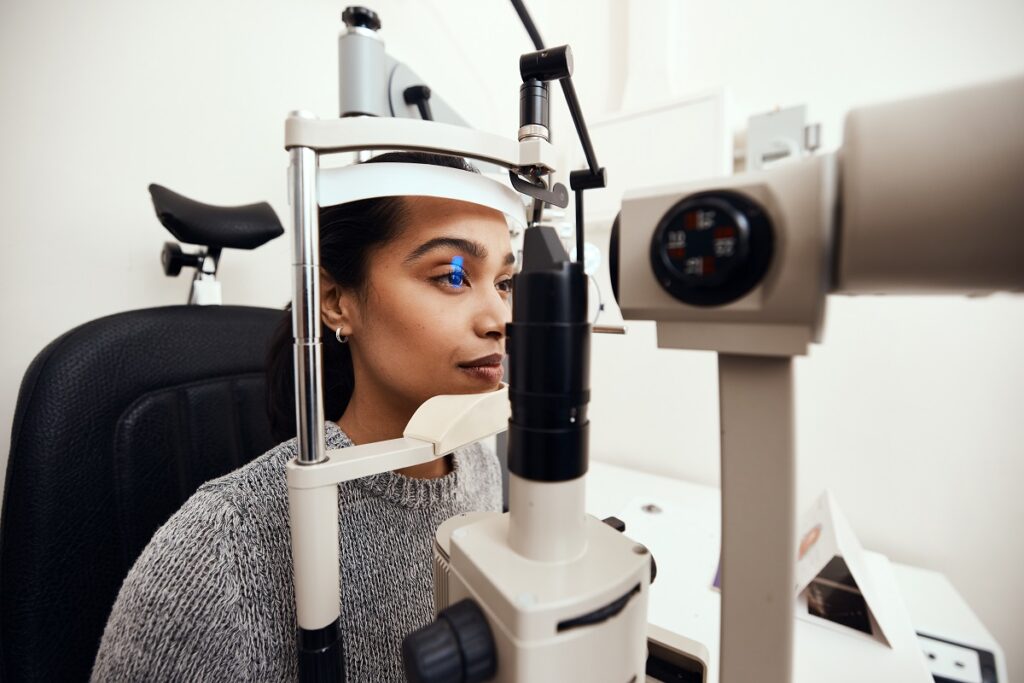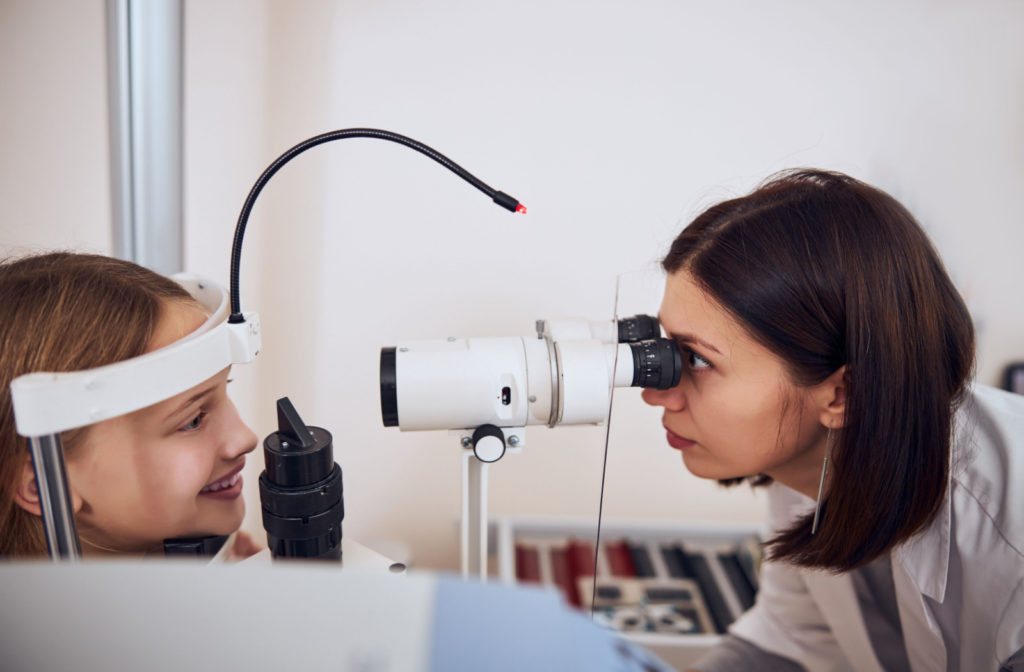Checking Out the current Technical Improvements in Optometry and What They Mean for Eye Doctors
In the ever-evolving area of optometry, current technical advancements are improving how professionals come close to eye treatment. From the accuracy of Optical Comprehensibility Tomography to the nuanced understandings used by AI-driven analysis tools, these innovations are setting brand-new requirements in individual analysis and treatment. Teleoptometry is poised to redefine ease of access, making certain that experience goes beyond geographical constraints. As these innovations penetrate the practice, eye doctors are faced with the obstacle of accepting these devices to boost person end results. The question stays: just how will these technical changes redefine the duties and obligations within the profession?
Technologies in Diagnostic Devices
Progressing the area of optometry, developments in diagnostic tools have actually changed the method eye care specialists assess and identify eye conditions and aesthetic impairments. The previous decade has actually witnessed considerable technical developments, enabling more exact and extensive examinations. Optical Coherence Tomography (OCT), for instance, supplies high-resolution cross-sectional pictures of the retina, enabling the early discovery of illness such as glaucoma and age-related macular deterioration. This non-invasive imaging method has actually come to be vital in contemporary optometric method.
Another secret development is the intro of sophisticated corneal topography systems, which map the surface curvature of the cornea with precision. These tools are specifically valuable for suitable get in touch with lenses and identifying corneal disorders. Electronic retinal imaging has changed conventional ophthalmoscopy, using detailed, breathtaking views of the retina that assist in thorough aesthetic exams.
The advancement of wavefront aberrometry has actually likewise been vital, making it possible for the evaluation of refractive mistakes with unequaled accuracy (Eye Doctor). This technology helps in personalizing corrective lenses and improving surgical outcomes for refractive surgical treatments. Collectively, these analysis advancements empower optometrists to deliver premium patient treatment, making sure very early treatment and tailored treatment techniques, inevitably enhancing aesthetic wellness end results
AI in Person Administration
Structure on the structure of sophisticated analysis tools, the unification of synthetic knowledge (AI) in person management stands for a transformative jump for optometry. AI systems are progressively used to enhance performance, precision, and customization in patient treatment. By examining vast amounts of data, AI can determine patterns and predict prospective ocular conditions, making it possible for eye doctors to customize interventions extra properly. This capability is vital in managing chronic eye conditions such as glaucoma and diabetic person retinopathy, where very early discovery and continuous tracking are essential.
Moreover, AI-driven platforms promote streamlined patient communications and administrative processes. Automated scheduling, digital examinations, and personalized follow-up strategies not just improve client fulfillment but also enhance time management for specialists. These systems can triage patients based upon the necessity of their problems, guaranteeing that those in crucial requirement receive prompt attention.
In addition, AI improves decision-making by giving eye doctors with evidence-based suggestions and treatment pathways. By integrating information from electronic health and wellness records, AI tools supply insights that educate clinical choices, reducing the threat of errors and enhancing patient outcomes. As AI continues to evolve, its function in individual management will likely expand, improving the landscape of optometric care.
Advancements in Retinal Imaging
In the realm of optometry, retinal imaging has seen amazing technological improvements that are enhancing analysis abilities and person treatment. Developments such as Optical Coherence Tomography (OCT) and fundus digital photography have transformed exactly how optometrists examine the retina and visualize. OCT, specifically, offers high-resolution, cross-sectional photos of the retina, permitting the thorough evaluation of its layers. This capacity is vital for very early detection and management of problems like glaucoma, diabetic person retinopathy, and age-related macular degeneration.
Enhanced imaging modalities like OCT angiography are additional refining diagnostic accuracy. This non-invasive method maps blood flow in the retina, using critical insights right into vascular wellness without the need for dye injections. In addition, adaptive optics innovation is being integrated right into retinal imaging systems to fix ocular aberrations, supplying unprecedented photo clarity. Such advancements help with the identification of minute retinal changes that can indicate illness progression.
Furthermore, advancements in synthetic intelligence are enhancing retinal imaging by allowing automated analysis of large datasets. These systems assist optometrists in recognizing patterns indicative of pathology, therefore boosting diagnostic precision and effectiveness. Jointly, these innovations are changing retinal imaging into a keystone of modern-day eye care, enhancing outcomes and broadening therapeutic possibilities.
Teleoptometry's Expanding Function
Teleoptometry is progressively ending up being a vital component of eye treatment, driven by improvements in digital interaction and analysis devices. This is especially useful in underserved and country areas where accessibility to specialized eye treatment official source is frequently limited.
The assimilation of expert system (AI) further enhances teleoptometry, making it possible for the analysis of aesthetic information and aiding in the detection of eye conditions such as glaucoma and diabetic retinopathy. AI-powered formulas can quickly translate complex imaging data, offering optometrists with valuable understandings that strengthen professional decision-making.
Additionally, teleoptometry supports connection of care through smooth combination with electronic wellness documents (EHRs), enabling optometrists to preserve thorough patient histories. This guarantees that patients get customized and regular care also when speaking with different experts.
Regardless of these advantages, challenges stay, consisting of ensuring information safety and security and handling person expectations. Nonetheless, teleoptometry stands for a significant stride towards even more accessible, effective, and patient-centered eye treatment. As modern technology evolves, its Get More Info role is poised to broaden additionally.

Future Fads in Eye Care
A myriad of innovative trends is readied to reshape the future of eye care, driven by technological developments and the progressing demands of patients. One significant trend is the combination of man-made knowledge (AI) in diagnostics, which assures to enhance the precision and effectiveness of eye assessments. AI formulas can evaluate huge quantities of information from retinal images, potentially identifying conditions like diabetic person retinopathy and glaucoma earlier than traditional techniques.
In addition, personalized medication is getting grip in optometry, with hereditary testing educating personalized treatment strategies. This technique aims to maximize patient results by tailoring treatments to private genetic accounts. Wearable modern technology, such as wise contact lenses, is additionally coming up, providing real-time surveillance of intraocular stress or glucose levels, hence supplying continuous insights right into ocular and systemic health and wellness.
The adoption of augmented reality (AR) and digital reality (VIRTUAL REALITY) in training and patient education and learning is an additional emerging fad. These modern technologies provide immersive experiences that can improve understanding and skills both for patients and eye doctors. As these trends advance, optometrists have to stay abreast of technical developments to give sophisticated care, making certain enhanced person outcomes and contentment in the dynamic landscape of eye treatment.
Conclusion

Collectively, these analysis developments encourage eye doctors to supply superior individual treatment, making certain early treatment and tailored therapy methods, inevitably improving visual health and wellness results.

As these innovations proceed to evolve, eye doctors must adjust and incorporate them right into technique, ultimately enhancing operations efficiency and raising the requirement of eye treatment supplied to patients.